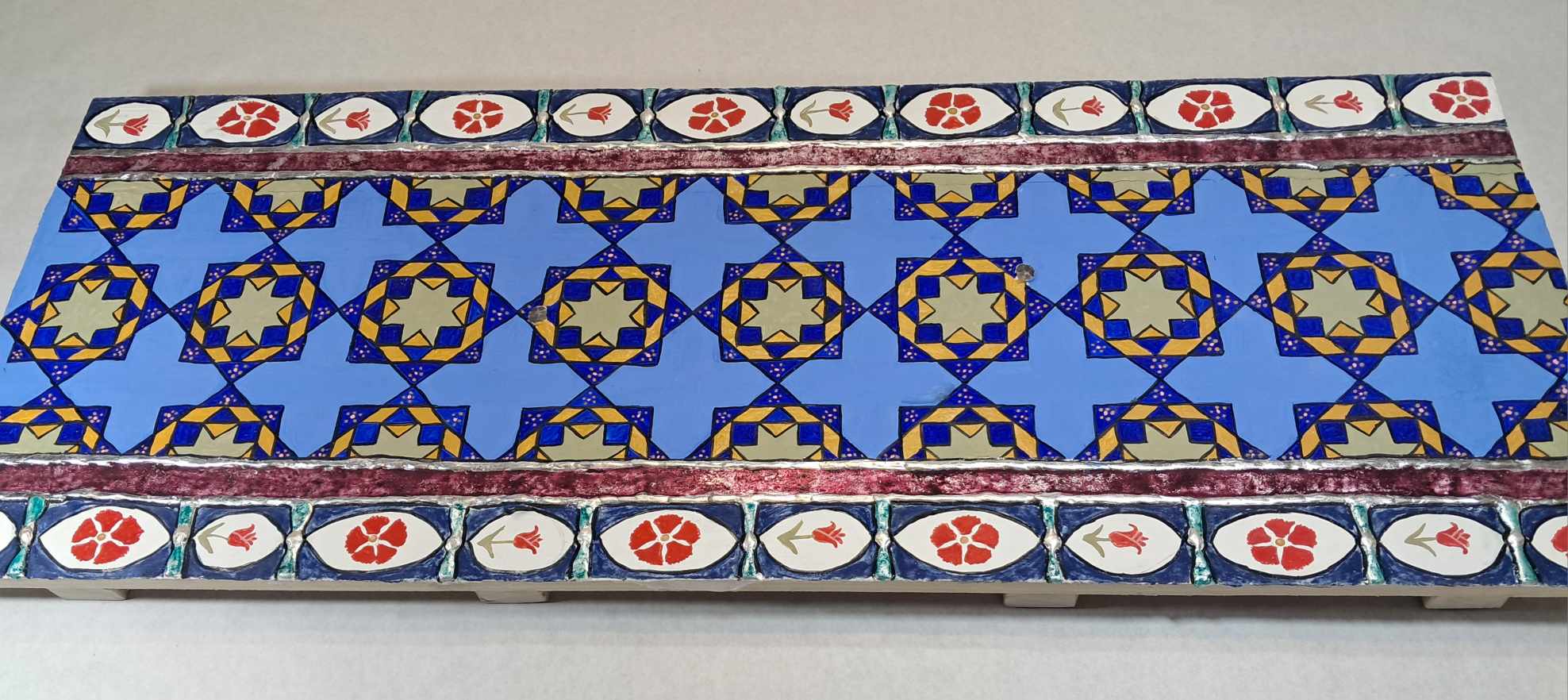Recently I entered into an Arts and Science Competition for our historical recreation group. Each individual who wanted to do a full entry would enter three complete entries. These could fall under the categories of Object, Process, Experimental Archaeology, Performance, Written Composition, or Research paper. You can find out more about the categories and other arts and sciences items in our group on their website https://arts.antir.org/.
One of my entries was a Process entry on the Syrian Ajami Panels. My research was then shared in this competition first as a paper and then as an in person presentation. Ultimately I was chosen to advance to the final round. While this is not the entry I choose to compete in the final round, it is the one that holds the most special interest to me.
Many years ago I entered my first art competition with an ajami piece. At the time I did not know as much about this art form and was more interested in making something that looked good then I was in making something that was historically accurate. As my interest in historic art has grown so has my knowledge and goal to strive to make pieces using more historically accurate methods and tools.
When I decided to enter this competition I knew it was not only a good chance to revisit this piece to show myself how I have grown, but to also show other artisans I had been talking to how we all start somewhere and that art is a journey and we all started somewhere and where they are at is a great spot for them.
For this project I not only ground my own pigments (including cochineal), but made my own nails, gesso, glaze and paint mediums, and learned how to use animal hide glue. It was an experiment in complete creation which I believe is not for everyone, but it was a challenge I wanted to set out for myself.
Another reason this topic is of particular interest to me is that the original pieces are disappearing as war and environmental factors play havoc on that region. If scientists, artists, and those who share a love of historic art and processes don’t actively work to keep this and other art forms alive there is always the risk that they could be forgotten and a piece of our history lost.
I spent two years researching this topic and experimenting with these techniques and learned a lot during this process. The best part of knowledge is sharing it with others, and to that end I wanted to share my entry on this site.
My Research & Resources:
- My Paper
- My Presentation
- Recommended Resources to start your own journey
- Syrian Heritage Archive
- Museum of Islamic Art
- Damascus Room at the MET
- Scharrahs, Anke. Damascene ‘Ajami Rooms Forgotten Jewels of Interior Design. London: Archetype Publications Ltd, 2013. Printed.
I will be uploading some pictures of my display and my original piece soon. I hope you find this piece of Historic Art as interesting as I did.
